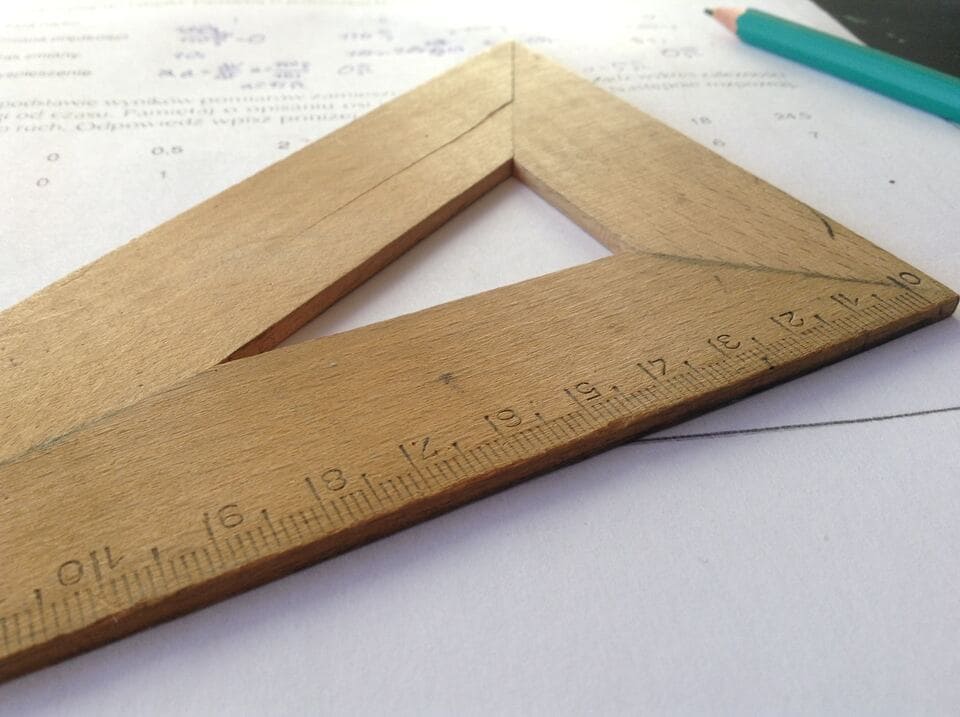Angles are the fundamental part of geometry in mathematics. Angles are formed when two rays or two lines meet at their endpoints. The two components that constitute an angle are “sides” and “vertex.” Angles are denoted by the symbol ∠. Angles are generally measured in radians or degrees, i.e. the measure of rotation. There are types of angles that can be formed with different measurements.
Angle is derived from the Latin word “Angulus” meaning ‘an angle.’ We come across different angles in our day-to-day life. Be it the angles formed by the hands of a clock or that the English alphabet V makes, we encounter different angles every day. So it becomes necessary to learn the types of angles. Angles can be classified into two main types based on rotation and magnitude. The names of the angles are Obtuse angle, Right angle, Acute angle, reflex angle, and full rotation, and positive and negative angles. Let us discuss them further and try to understand them better.
Different types of Angles:
Based on Magnitude
- Acute Angle: Any angle whose measurement is less than 90 degrees is known as an acute angle, which means the angle measures more than 0 degrees but less than 90 degrees. Its measurements lie between 0-90 degrees.
- Right Angle: The angle which measures exactly equal to 90 degrees is called a right angle. Angles that measure less than 90 degrees cannot be right angles but are acute angles. Also, angles more than 90 degrees cannot form a right angle. Right angles have to measure exactly equal to 90 degrees.
- Obtuse Angle: The angle whose measurement lies between 90 to 180 degrees is called an obtuse angle. An obtuse angle is more than 90 degrees but less than 180 degrees which is the opposite of an acute angle. The angles below 90 degrees will form an acute angle and not an obtuse angle.
- Straight Angle: Just like the right angle, a straight angle is an angle that has a measurement exactly equal to a certain degree, that is 180 degrees. In short, any angle that is exactly equal to 180 degrees is called a straight angle. It simply forms a straight line.
- Reflex Angle: It is an angle that measures more than 180 degrees but less than 360 degrees. An acute angle is less than 90 degrees, so the larger angle complementary to it is called a reflex angle.
- Full Rotation: When an arm takes a complete rotation, it forms a full rotation. Full rotation is an angle that is equal to 360 degrees. Its measurements are equal to 360 degrees.
Based on Rotation
- Positive Angles: When we draw an angle in the (+x, +y) plane, we form a positive angle. In simpler terms, an angle that we measure in a counterclockwise direction from the base is called a positive angle.
- Negative Angles: When we draw an angle in the (x, -y) plane, it will form a negative angle. In simpler terms, an angle that we draw in a clockwise direction from the base is called a negative angle.
So we see, these are the main types of angles. Apart from these, there are also parts of angles such as the complementary and supplementary angles. When the sum of two angles is 180 degrees, it is called supplementary angles, and when it is 90 degrees, it is called complementary angles. There are others such as linear pairs, adjacent angles, and vertically opposite angles.
To learn more of these, head to Cuemath to get proper lessons and enhance your skills. Get all the necessary knowledge that will help increase your math understanding.
So, today we learned that angles are formed when two rays meet each other at their endpoints. There are different types of angles. And every angle carries different measures. Now, apply this knowledge in your daily lives and improve your skills in a better way.






